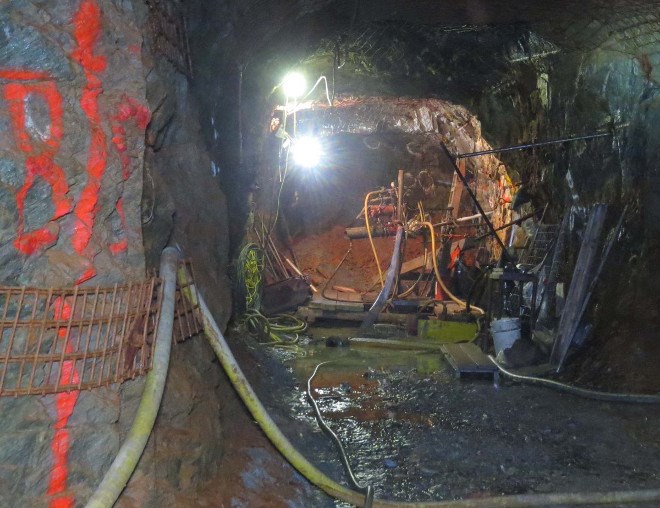Sage Gold has started mining the upper portions of its Clavos gold mine near Timmins in preparation to send a bulk shipment for a mill run in mid-October.
The Toronto mine developer reports it’s building a stockpile of mineralized material both on surface and underground at the past producing mine, some of which was left behind by the previous operator.
The company reports that it has started mining on the east part of the 150-metre level, the east part of the 100-metre level and shortly on the western half of the 150-metre level and the 200-metre level.
At the same time, it’s conducting underground definition exploration drilling to test some high-grade zones while dewatering continues down to the mine’s bottom at the 300-metre level.
Clavos is 32 kilometres northeast of the city and was acquired from the former St. Andrew Goldfields last fall.
A preliminary economic assessment from 2013 had Clavos producing more than 145,000 ounces over seven years. A new resource estimate and a feasibility study are in the works.
The company’s timelines have the portal-and-ramp mine going into commercial production by the second quarter of 2018.
The company said the mine dewatering, which began in January, is 87 per cent complete and should be down to the 261-level by mid-September.
That particular level was developed but not mined by St. Andrew Goldfields. Sample grades there show 19.55 grams per tonne of gold.
A stope definition drilling program is ongoing to delineate stope blocks for subsequent mining.
A drill station will be placed at the 240 metre-level to target more high-grade mineralization.
The company said they’ve been encouraged by some of the drill intersections to date, including 17.78 grams per tonne)(g/t) at 4.0 metres and 10.59 g/t over 1.9 metres.
"The re-opening of the Clavos mine continues to progress well in terms of dewatering of the existing underground structure, rehabilitation and the development of stoping blocks,” said Sage president-CEO Nigel Lees in a Sept. 1 statement.
“Definition drilling which progressed slowly at first primarily due to a shortage of experienced drillers and equipment is now operating normally. This delay has been offset by the existence of mineralized material previously developed but not mined by the previous owners.”
The mine is fully permitted for 700 tons a day and there’s a toll milling agreement with the nearby Stock mill.
The company reported that it’s drawn down the final tranche of $3.26 million to finance production.




